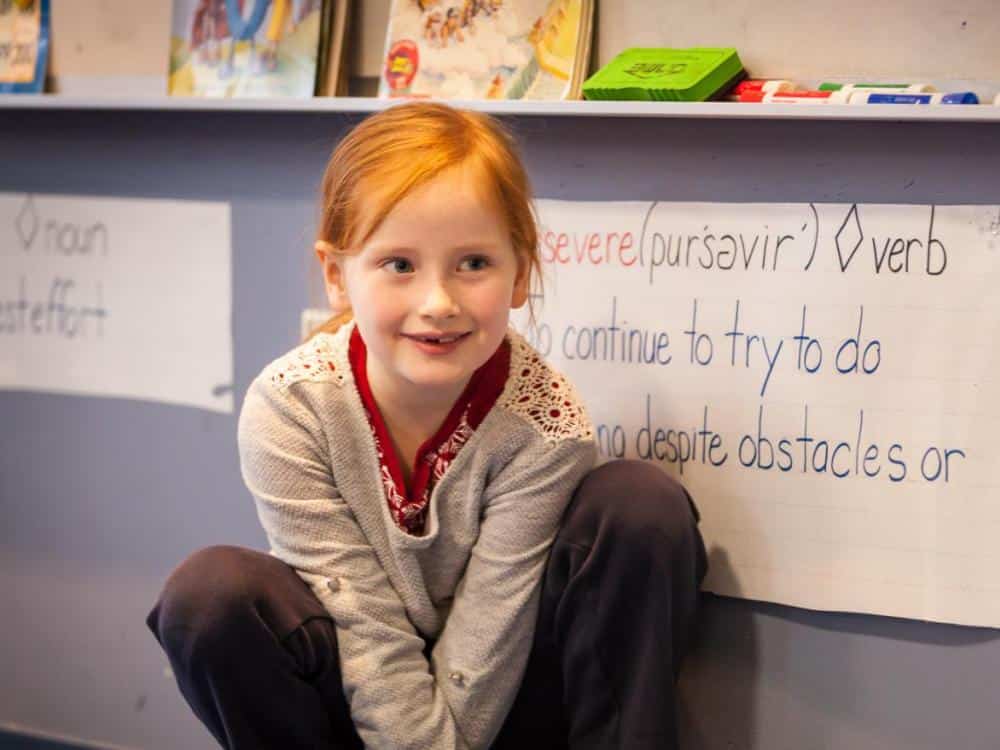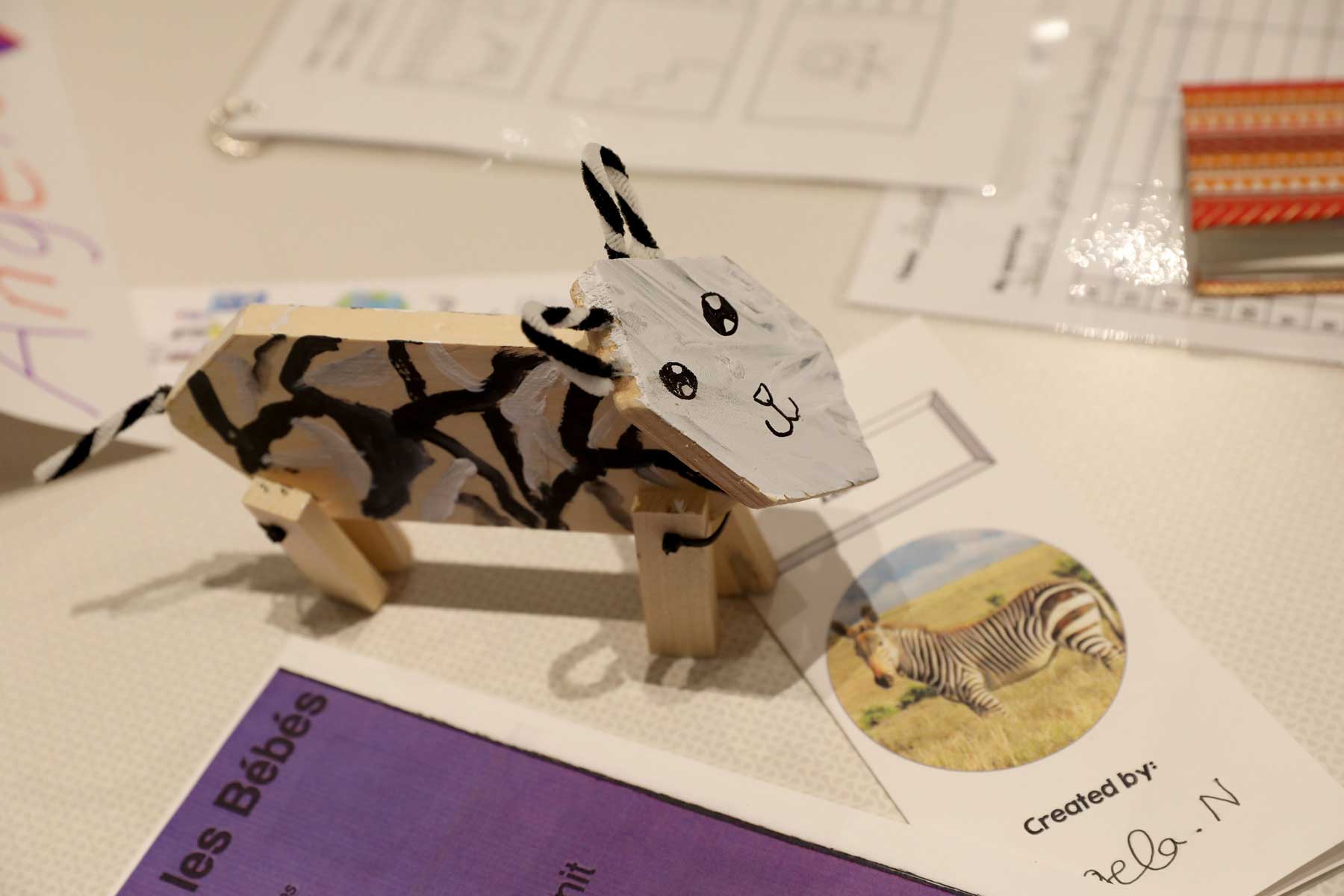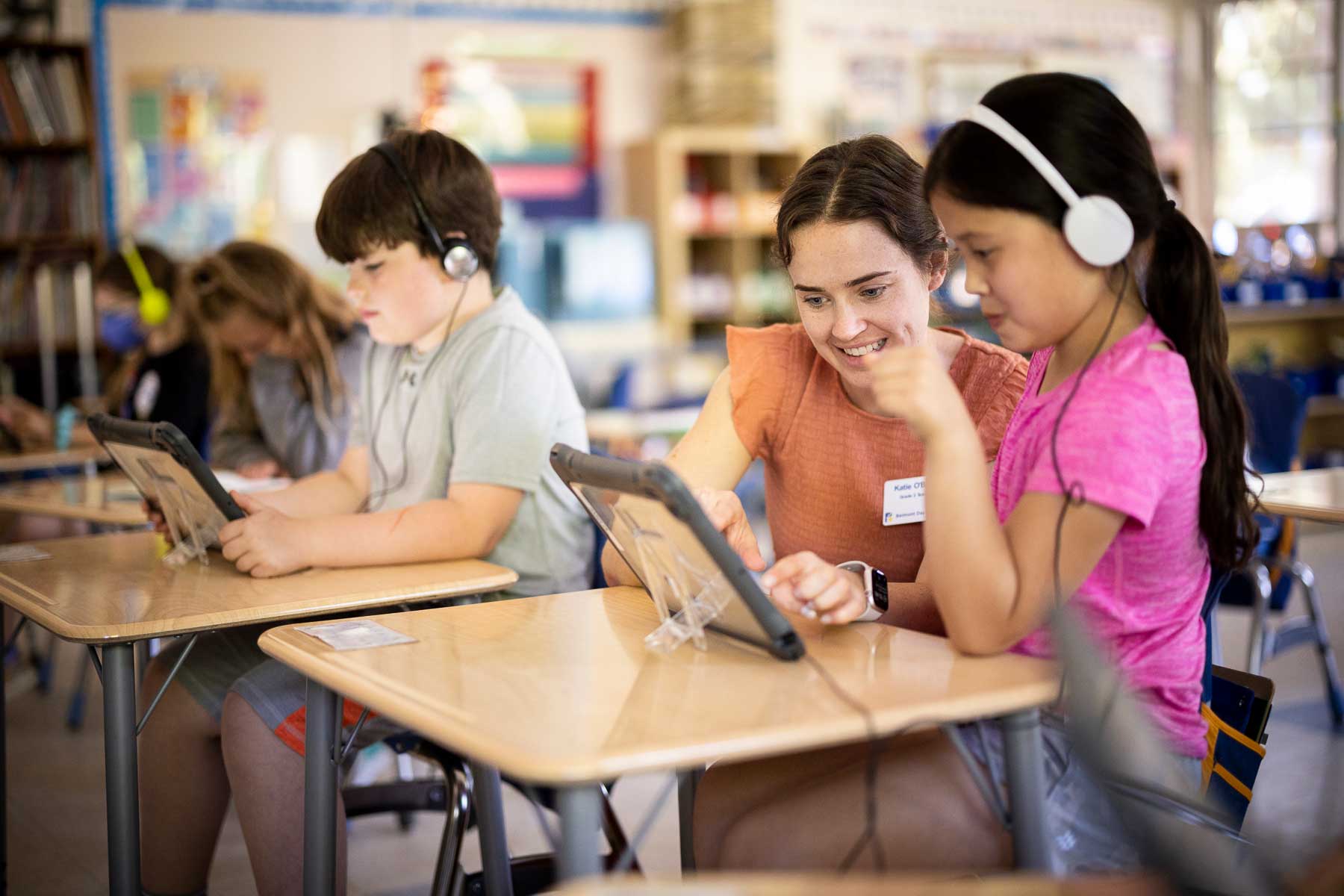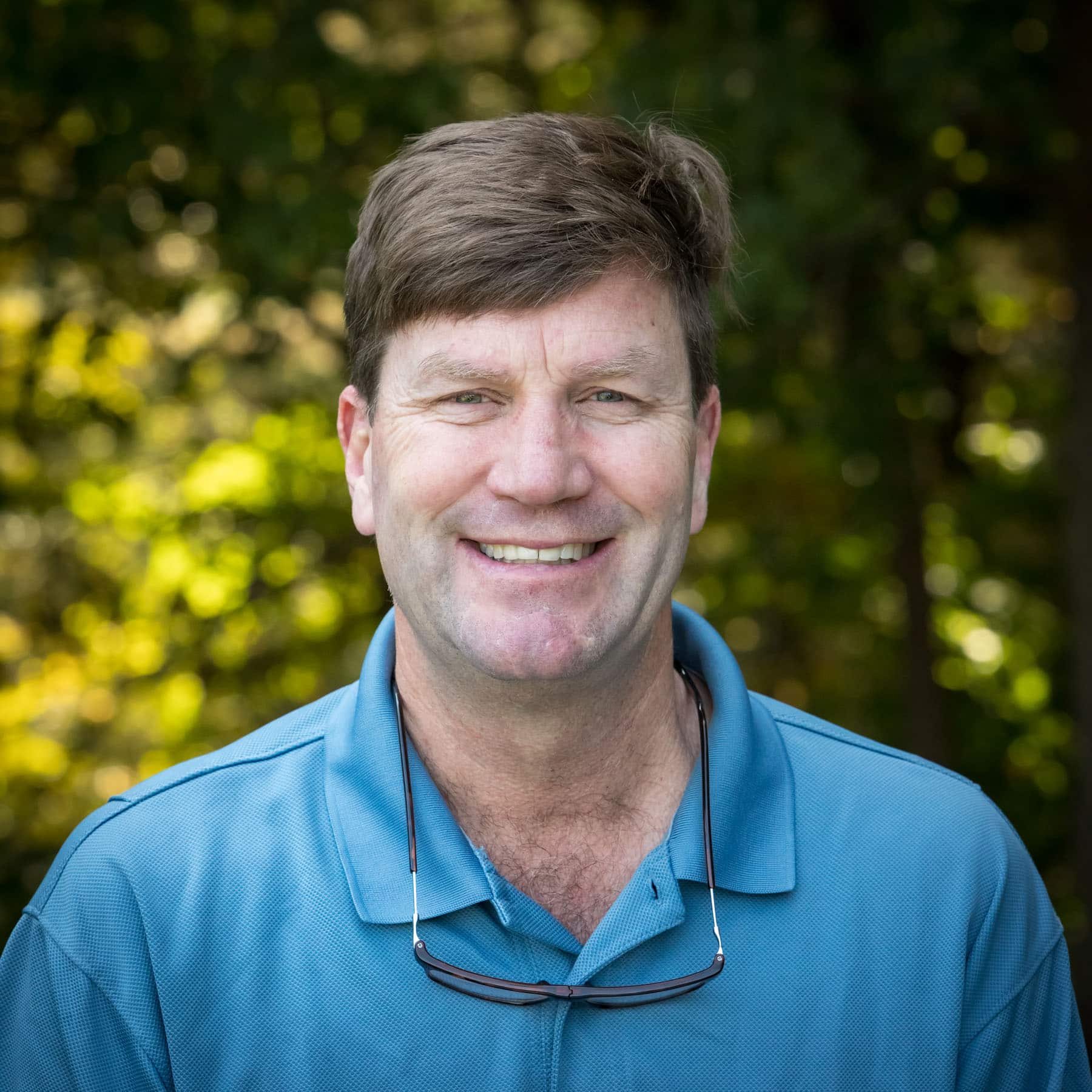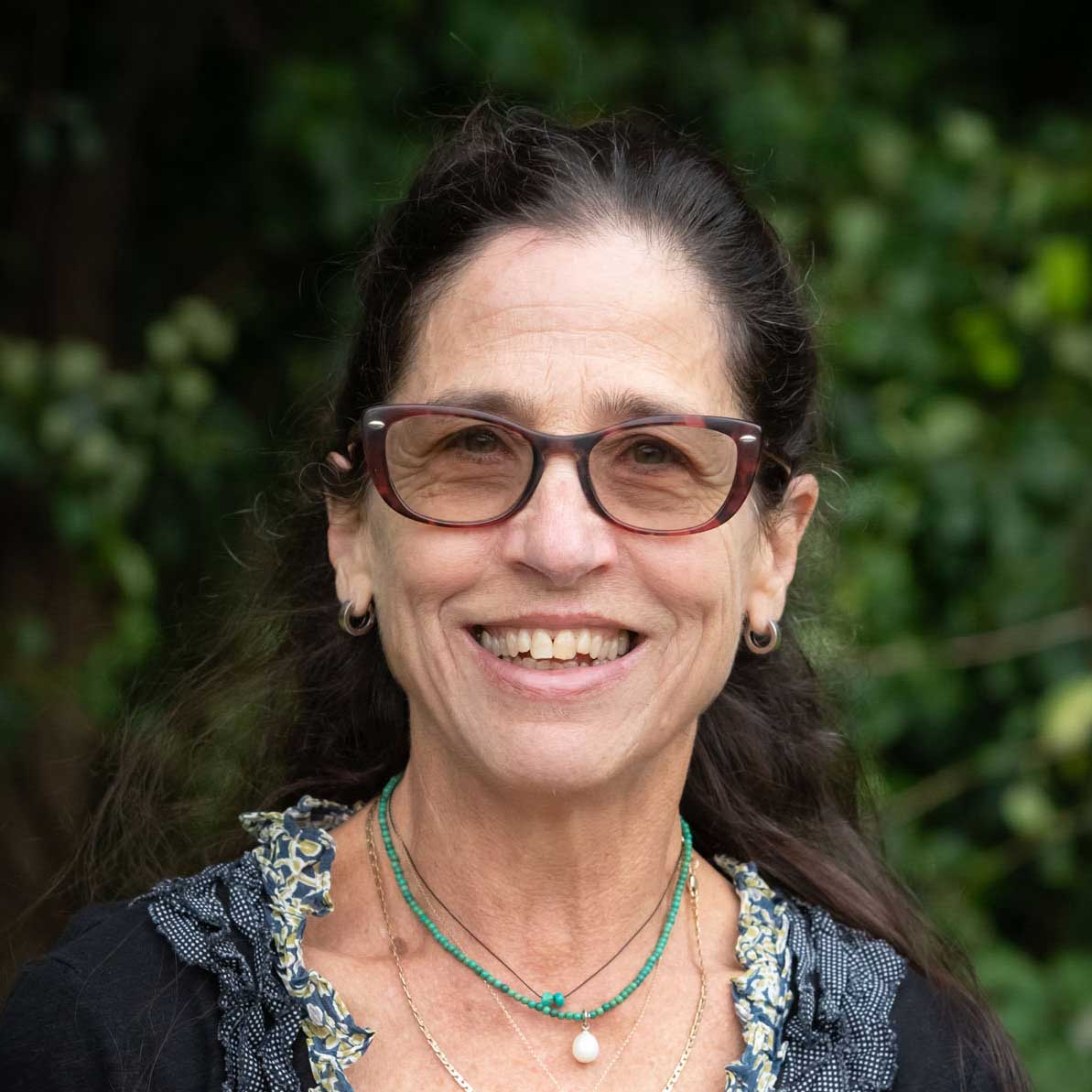Second grade students apply what they have learned about the meanings of letters and numbers to more complex challenges and to further develop their analytical abilities. They are eager to look outside themselves, compare their experiences to others, and discover the broader world. Second grade students learn about animals, the environment, and the Earth’s resources. Opportunities for community service harness their emerging planning skills and eagerness to help others and influence their world. They earn more responsibility to resolve conflicts and demonstrate themselves as integral to the classroom community.
Program Highlights
- Continent studies
- Endangered animals research
- Class play
- School garden
- Folktales and fables
- Year-long service learning project for Gaining Ground
- Community building activities
- Change-makers unit
- Math lunch
Specialist Time
- French once a week for 45 minutes
- Art studio once a week for 45 minutes
- Music once a week for 30 minutes
- Theater arts once a week for 45 minutes
- Woodworking once a week for 45 minutes
- Physical education three times a week for 30 minutes
- Library once a week for 30 minutes





